D850 Astrophotography: SpaceX Rocket,
Asteroid 20 Massalia
Posted: 7 February 2018
|
Open: Tuesday, 6 February 2018, 1823 MST Temperature: 72°F |
Session: 1197 Conditions: Clear, breezy |
Equipment Used:
12" f/8 LX600 w/StarLock
2" 24mm UWA eyepiece
Focal Reducer
Camera:
D850 DSLR
After entering the observatory I delayed powering on the 12" LX600 due to the breezy conditions. I just enjoyed watching the stars come out.
1927 MST: I stepped outside of the observatory to do some handheld D850 DSLR sky photography using a 8mm fisheye lens. I saw a bright light in the western sky near the Zodiacal Light. At first I thought it was an airplane light in a cloud. But then I realized there were no clouds there. I took a quite look at the object using 12x50 binoculars. It had to be a rocket. And then I remembered that SpaceX was planning to start the Tesla car and spaceman on its way out of Earth orbit at about this time. The object HAD to be the SpaceX rocket burn (and it was).
I quickly took this handheld photo, f/3.5, 1 second, ISO 25600, FL 8mm fisheye, showing the night sky over Cassiopeia Observatory:
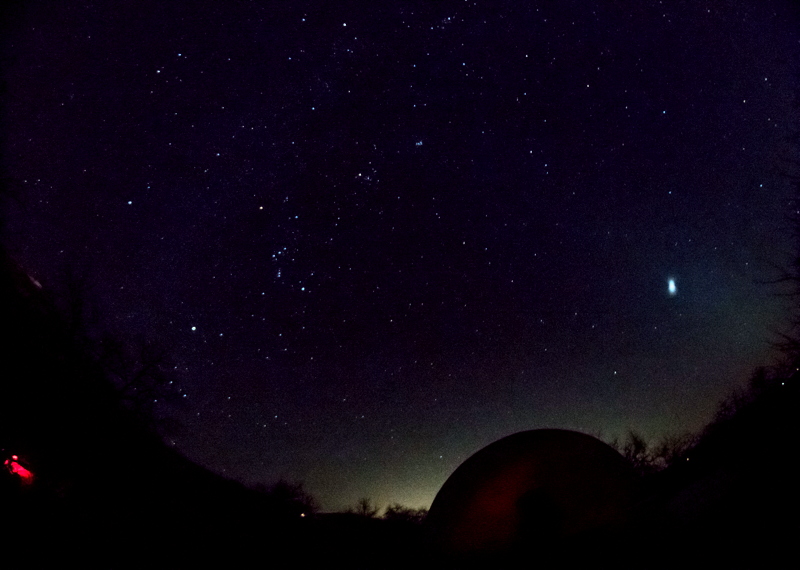
The photo above shows the silhouette of the observatory dome at the bottom, the constellations of Canis Major, Orion, Gemini, and Taurus, the Pleiades, a hint of the Zodiacal Light at the right, with the SpaceX rocket at the right near the Zodiacal Light.
I then ran to the house to get the 24-70mm lens to take some telephoto photographs of the rocket. These are handheld, f/2.8, 1/4sec, ISO 25600, FL 70mm, photos, showing the rocket and plume as it moved across the sky from the west to the southeast:
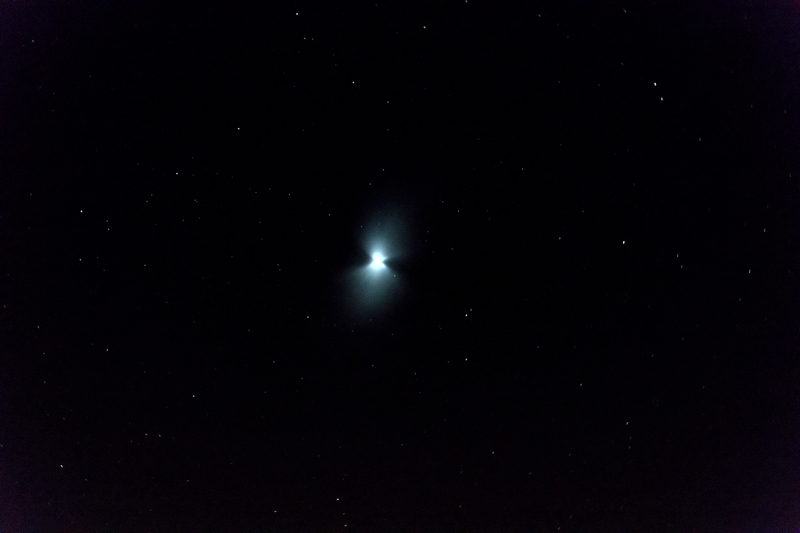
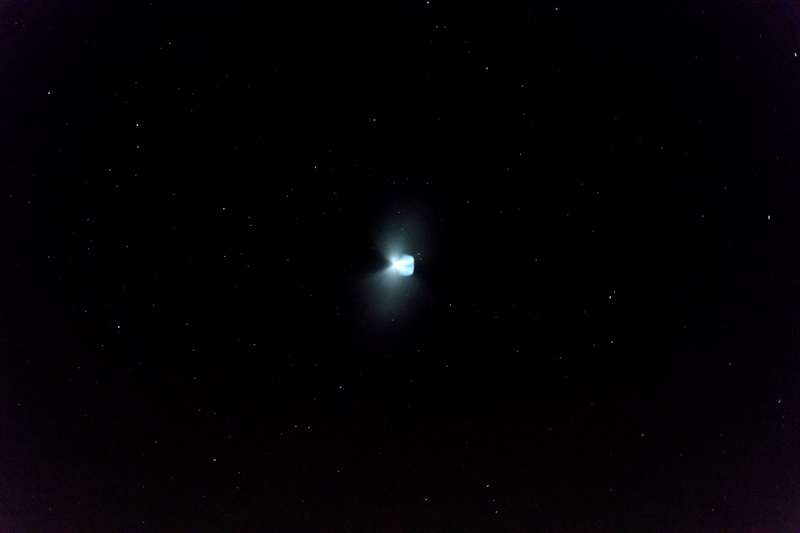
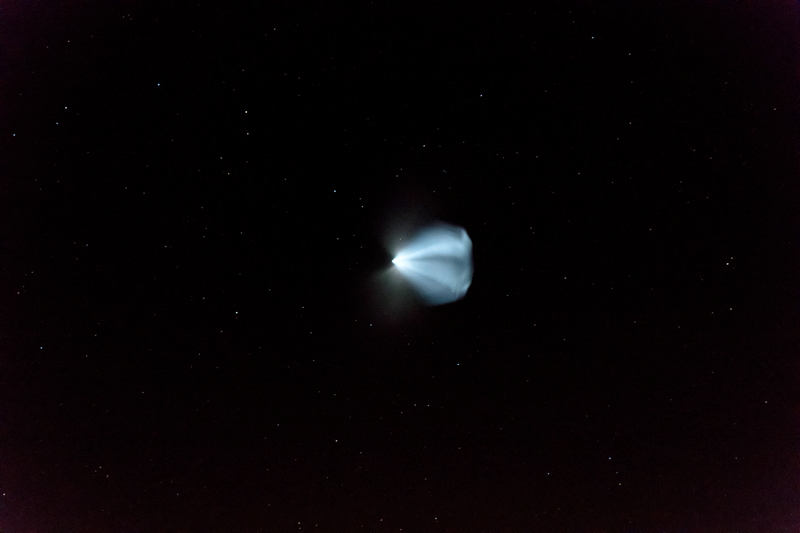
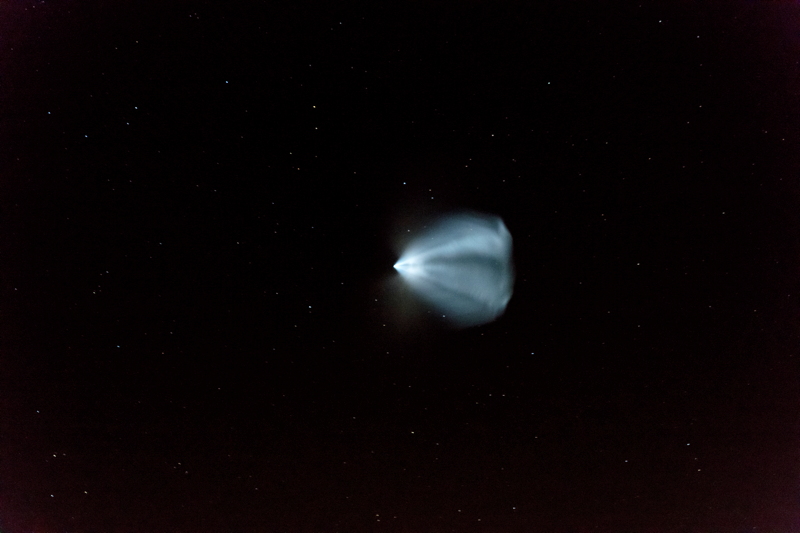
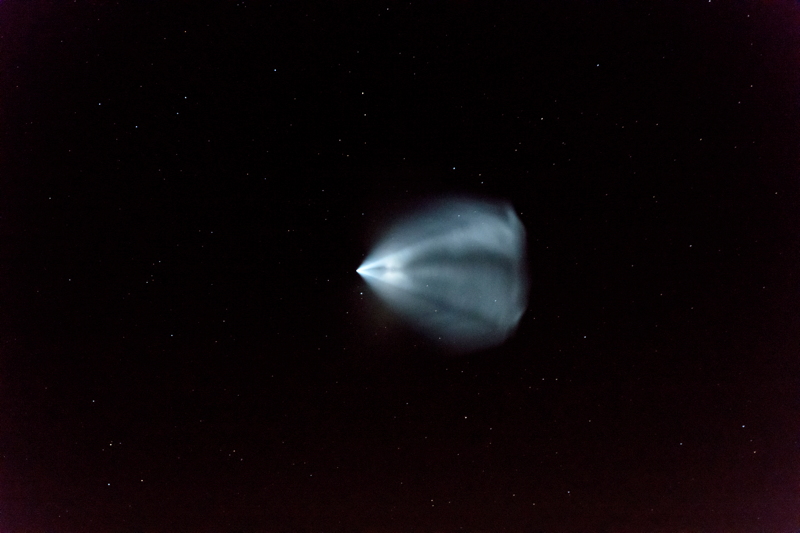

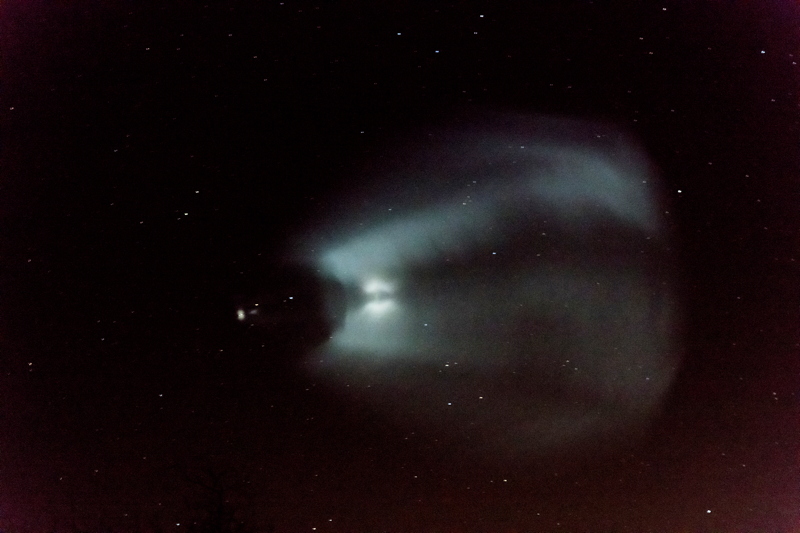
A pretty impressive sight. I would never have been able to capture handheld photos like these with my older DSLR. The D850 is a superb night camera.
1946 MST: LX600 ON, StarLock OFF, High Precision OFF. Dome OFF (onto the PZT).
SYNCEd on the star Aldebaran. Prepared the D850 DSLR for imaging.
2000 MST: Wi-Fi ON. Used SkySafari 6 Pro to GOTO the Asteroid 20 Massalia.
Slewed back to Aldebaran, mounted the D850 DSLR at prime focus + focal reducer. Slewed back to the asteroid.
2007 MST: StarLock ON.
2010 MST: took a StarLock autoguided, 2 minute, ISO 6400, exposure.
2014 MST: Wi-Fi OFF.
2110 MST: took a second StarLock autoguided, 2 minute, ISO 6400, exposure of the asteroid.
2113 MST: StarLock OFF.
This is a (cropped) image showing Asteroid 20 Massalia:
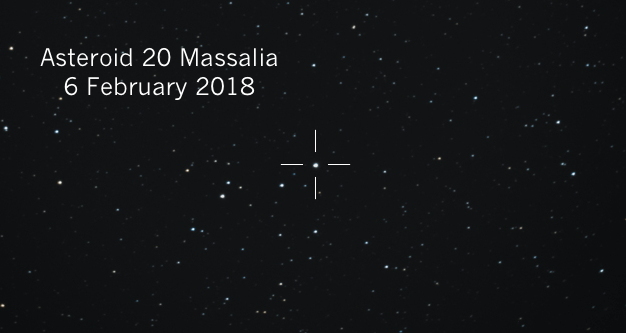
This animated GIF shows the motion of the asteroid over the one hour interval:
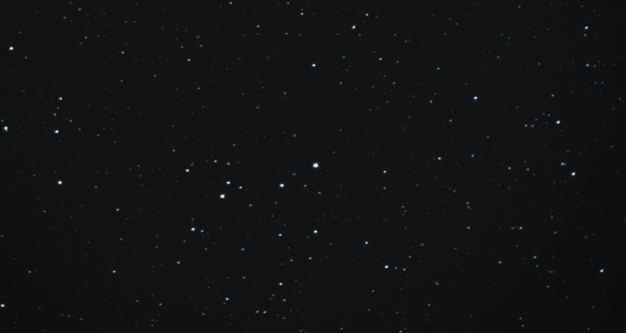
Next, I did some tests of aligning the DSLR to see if a suggestion I received would work. The issue was how to consistently align the orientation of the camera from night-to-night. This technique was straightforward. Point the telescope at a moderately bright star and then slew back and forth in Right Ascension. I used a focus square in a magnified Live View as an alignment marker and rotated the camera until the star moved parallel to horizontal lines of the square. This seemed to work pretty well. Thanks John!
2134 MST: LX600 OFF.
|
Close: Tuesday, 6 February 2018, 2150 MST Temperature: 52°F |
Session Length: 3h 27m Conditions: Clear |
I have posted my review of the Nikon D850 DSLR.
Comments are welcome using Email. Twitter users can use the button below to tweet this report to their followers. Thanks.
Cassiopeia Observatory Home Page
Copyright ©2018 Michael L. Weasner / mweasner@me.com
URL = http://www.weasner.com/co/Reports/2018/02/07/index.html
